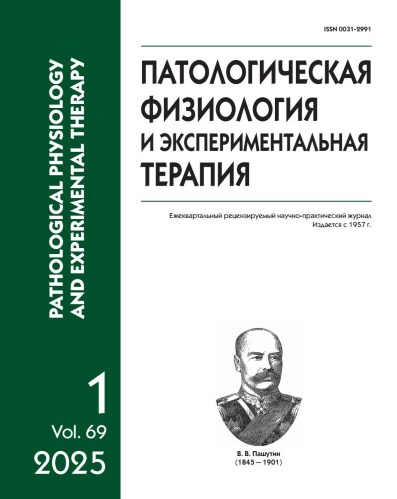Changes in the metabolism and state of blood and bone marrow cells during a course of Lactoferrin treatment at various stages of the development of type 2 diabetes mellitus
Abstract
The aim was to study time-related changes in the metabolism and state of blood and bone marrow cells during a course of Lactoferrin (Lf) treatment in various periods of the progression of type 2 diabetes mellitus (DM2).
Methods. Experiments were performed on 40 db/db mice with genetically modeled DM2 and 10 healthy db/+m mice (control). The db/db mice were divided into two groups: Group 1 was the control (n=10) and Group 2 consisted of three subgroups with DM2 (n=30). The DM2 subgroups received a 1% Lf drinking solution for up to two months during three stages of DM2 severity: stage 1, adaptation; stage 2, progressive disadaptation; and stage 3, decompensation. At these stages, blood glucose concentration, body weight, index of oxidative metabolism (IOM) in tissues, and the state of blood and bone marrow cells were assessed. Statistical analysis was performed after a preliminary use of the Shapiro–Wilks test. The significance of differences from the control was assessed with the parametric Student's t test at p<0.05.
Results. The use of Lf at stages 1 and 2 of DM2 stabilized the glucose concentration and body weight and contributed to normalization of their values after the Lf discontinuation. By the end of the Lf treatment at stage 3, these indices sharply decreased and the animals died. During the Lf treatment at stages 1, 2 and 3 of DM2, the IOM always decreased, but after the Lf discontinuation, the IOM increased and became higher than the background level, if Lf was administered at stages 1 and 2. Respective stress-adaptive changes were also identified for blood and bone marrow cells that developed with the participation of programmed cell death mechanisms.
Conclusion. The Lactoferrin course treatment used for the correction of clinical manifestations of DM2 works as a powerful adaptogen and is capable of producing an adjuvant effect on the metabolism and state of blood and bone marrow cells, but only if the adaptive reserves of the body are preserved.






